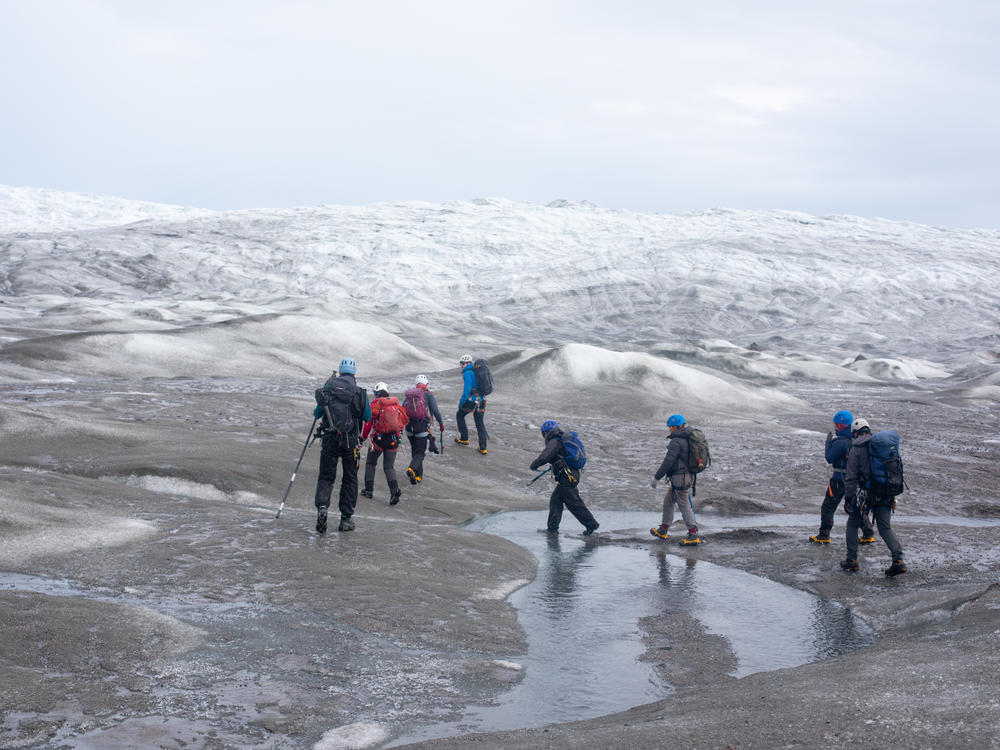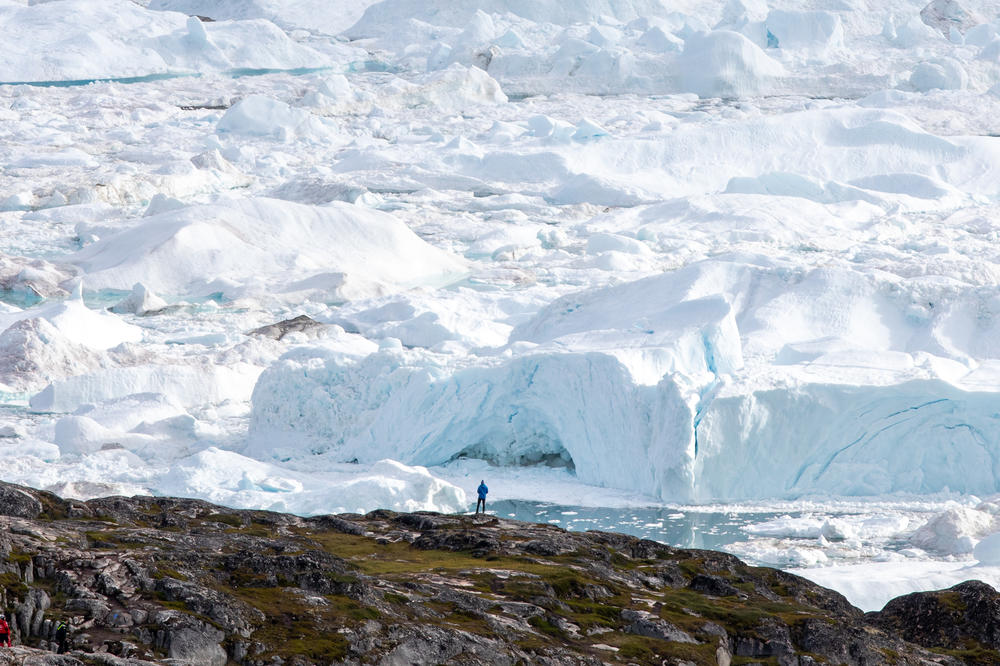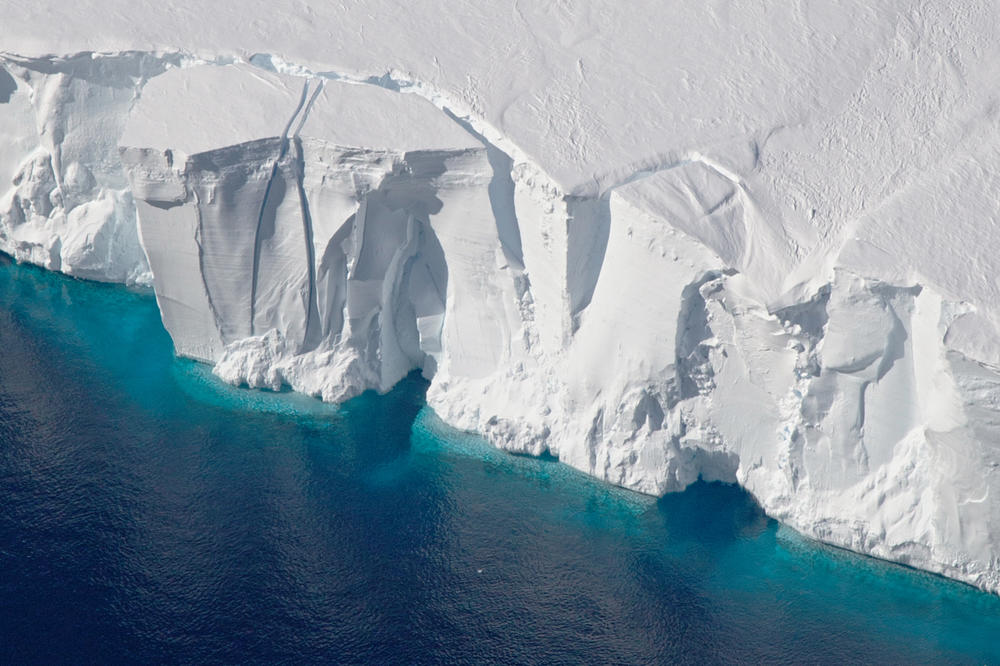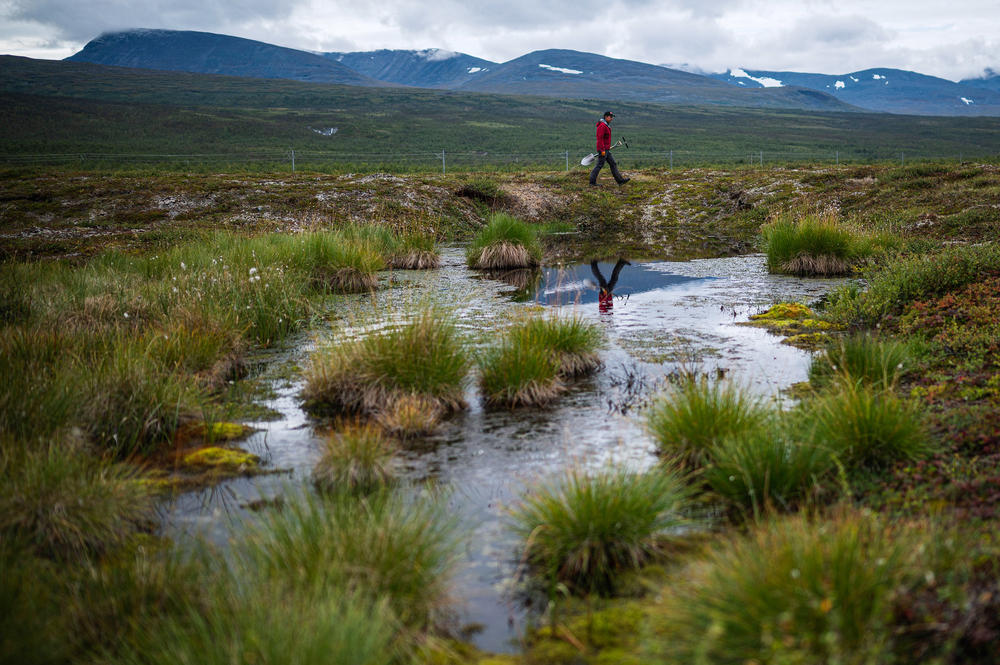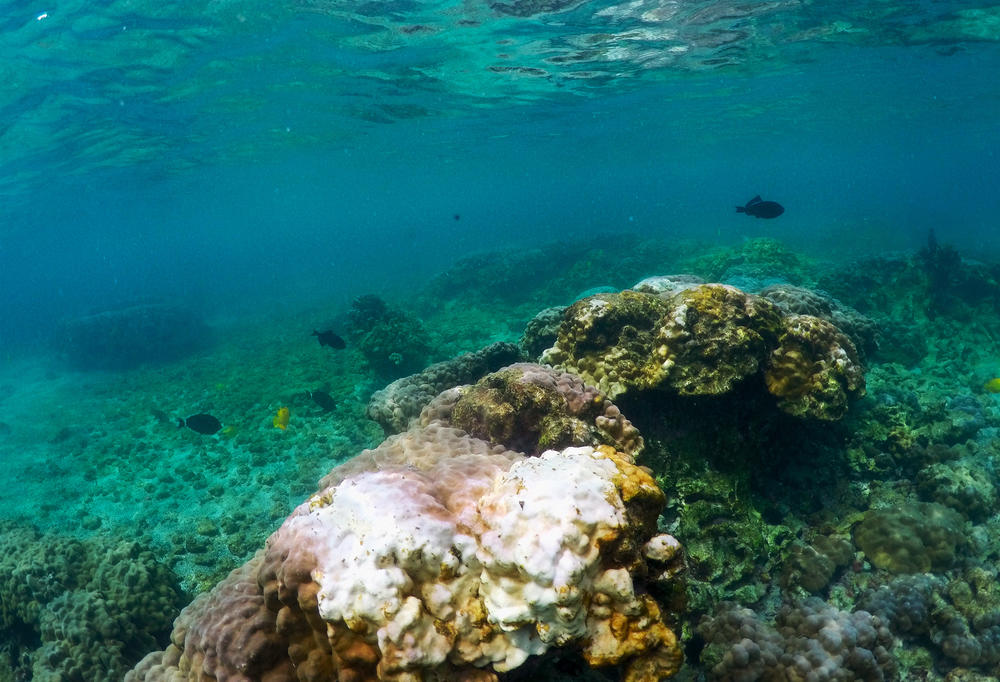Section Branding
Header Content
Here are 3 dangerous climate tipping points the world is on track for
Primary Content
The goal of the international climate meeting underway in Egypt is to limit global warming to 1.5 degrees Celsius, compared to temperatures in the late 1800s. Even at that level, communities will experience more dangerous storms, flooding and heat waves.
But if the planet heats up beyond 1.5 degrees, the impacts don't get just slightly worse. Scientists warn that abrupt changes could be set off, with devastating impacts around the world.
Such changes are sometimes called climate tipping points, although they're not as abrupt as that term would suggest. Most will unfold over the course of decades. Some could take centuries. Some may be partially reversible or avoidable. But they all have enormous and lasting implications for the humans, plants and animals on Earth. And they are looming.
It's still possible to avoid such widespread calamities, but only if countries move far more aggressively to cut the pollution driving climate change. The Earth has warmed about 1 degree Celsius so far. If countries, including the United States, follow through on current promises to reduce greenhouse gas emissions, the latest estimates suggest that Earth's temperature will still top out around 2.8 degrees Celsius of warming.
Here are the three most important and well-studied changes, from collapsing ice sheets to thawing Arctic permafrost, to disappearing coral reefs.
Change #1: Ice sheets in Greenland and West Antarctica could collapse
Ice sheets are the massive expanses of ice that cover Greenland and Antarctica, and which contain about two thirds of the freshwater on Earth. Climate change is already causing them to melt, and raising sea levels around the world.
But if the Earth lingers at, or above, 2 degrees Celsius of warming, as it is on track to, that melting will steadily accelerate. Scientists warn that will cause parts of the ice sheets to collapse, sending massive amounts of water into the world's oceans.
The million dollar question is how quickly that collapse will occur. "Collapse tends to be a bit of a loaded world. People think of it like a building collapse," says Ian Joughin, a glaciologist at the University of Washington who has spent decades studying how giant glaciers move and change.
"Maybe a better timescale for an ice sheet [collapsing] is the Roman Empire," Joughin explains. Like a dying empire, the ice sheets in Greenland and West Antarctica are huge. It will take decades or even centuries for them to disintegrate.
This year marks the 26th year that Greenland has lost more ice than it gained. Last year, rainfall was recorded at the ice sheet's highest point, rather than snow, a sign that warmer temperatures were triggering widespread melting.
As temperatures continue to warm, scientists say the two-mile thick ice sheet is getting out of balance. Snow and ice are melting faster than they're being replaced, and as the ice melt accelerates, the process is difficult to stop. One study found that no matter how humans cut greenhouse gas emissions going forward, the melting of the Greenland ice sheet is likely to cause 10 inches of sea level rise.
Research suggests that the collapse of the West Antarctic ice sheet may already be underway. A massive glacier there, which covers an area about the size of the state of Washington, is melting quickly in response to climate change, and could splinter into the ocean in the coming decades.
If that glacier melts entirely, it will add so much water to the oceans that sea levels will rise about 2 feet. If the entire West Antarctic ice sheet melts, scientists estimate that sea levels will rise about 12 feet.
Due to their enormous size, ice sheets have a huge amount of inertia. Once the melt process gets underway, it's difficult to stop.
"It takes a few hundred years to really get going," says Joughin. "And it's kind of a snowball effect, where the faster it goes, the more it's going to go."
But it will take a long time for people around the world to feel the most extreme effects of that melt. "It could be anywhere from two or three hundred years to a thousand years," says Joughin.
If humans slow down the pace of global warming, it will help slow down the pace of ice melting, giving the billions of people who live along coastlines more time to adapt.
Change #2: Permanently frozen ground could thaw
Climate change is causing permafrost – the permanently frozen ground in the Arctic – to thaw. And as the Earth approaches 2 degrees Celsius of warming, that thawing ground will cause both local and global problems.
Let's start local. When permafrost thaws, the ice that's trapped in the ground turns into water and drains away. "It can have really profound consequences," says Merritt Turetsky, the director of the Institute of Arctic and Alpine Research at the University of Colorado, Boulder. "We can see lakes draining overnight. We can see ecosystems becoming much drier in some areas, because the permafrost was actually holding the water up at the surface."
That's because when the ground is frozen, it's impermeable to moisture, like the lining of a bathtub. "When it thaws, we pull the drain out of the bathtub," Turetsky explains.
Thawing permafrost has profound impacts for the millions of people who live in the Arctic. In many places, the land is sinking as it thaws, cracking the foundations of buildings, buckling roads and runways and kinking pipelines. That will accelerate as the Earth heats up more.
Thawing permafrost also has global climate implications. Permanently frozen ground is like the world's freezer: millennia of dead plants and animals are locked up in permafrost.
"When permafrost thaws it's a little like losing power to your freezer. That food starts to rot," explains Ted Schuur, a permafrost expert at Northern Arizona University. Bacteria and fungi start to digest the carbon-rich soil, releasing planet-warming methane and carbon dioxide into the atmosphere.
Basically, it's an infinite loop of greenhouse gasses: human emissions cause the planet to heat up. That heat thaws permafrost, which releases more emissions.
But how much extra carbon ultimately gets released by Arctic permafrost in the future is up to humans. "The faster we can decarbonize society today, the more permafrost carbon we can keep in the Arctic ground where it belongs," says Turetsky. For example, by using renewable energy instead of burning fossil fuels.
But, she warns, there will be a lag: the warming that has already occurred will keep thawing permafrost for decades. "Our climate warming today is going to thaw permafrost and cause that permafrost to lose carbon 50 years from now," Turetsky explains.
Change #3: Coral reefs could be gone forever
By overall area, coral reefs are a tiny part of the ocean. But they're a bedrock ecosystem for marine life, supporting an estimated 25% of all species.
Corals are highly sensitive to heat, and as the oceans warm, the future of reefs is in peril. When marine heat waves hit, corals under stress expel their algae companions, which they need to survive. The reefs turn a ghostly white color.
A bleaching event doesn't necessarily mean the end for a coral reef. Corals have the ability to recover, given enough time. But repeated heat waves, as seen at Australia's Great Barrier Reef, can kill a reef, leading to the collapse of the ecosystem.
Oceans are also becoming more acidic, as they absorb the carbon dioxide that humans emit from burning fossil fuels. That also stresses corals, making it difficult for them to build their skeletons.
If the world passes 2 degrees Celsius of heating, an estimated 99% of the world's coral reefs could be lost. The damage is happening faster than scientists expected. Combined with the effects of pollution and human development, half of all reefs worldwide will be in unlivable conditions by 2035, according to a new study.
"The coming decades will bring, I think, unprecedented change for both these reef systems and humanity in general," says Erik Franklin, professor at Hawaii Institute of Marine Biology at the University of Hawaii at Manoa, who worked on the study.
It's estimated that half a billion people around the world depend on coral reefs for food, income and livelihoods. Losing reefs would destabilize many countries, along with risking extinction for marine life that can only be found on coral reefs.
"There's entire societies and economies that are built around reef systems, especially in equatorial and tropical regions," Franklin says. "So these societies will be in dire straits."
Many scientists are searching for "refuges" – pockets of the ocean where conditions might remain livable for coral reefs. The hope is that coral reefs can hold on there, surviving just long enough until humans can get their heat-trapping emissions under control.
Copyright 2022 NPR. To see more, visit https://www.npr.org.

